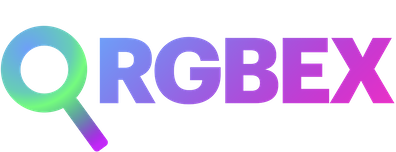Interfaces
Interfaces define a way how user may interact with a smart contract and its assets.
Usually, they represent different types of assets (tokens, NFTs, identities).
Some of the interfaces are standardized;
these interfaces are usually supported by most of the wallets, exchanges and other software.
Interface standards
-
RGB20
Fungible assets
Standard defines classical form of assets and is suitable for cryptocurrencies and stablecoins, governance tokens, community tokens, securities, derivatives, shares and many other asset classes, all of which require fungibility. It is analogous to other fungible asset standards, like ERC20, TRC20 etc, but unlike them offers many additional options on top: ability to change the name or nominal of the asset (can be useful for stock market split operations), provide provable burn, replace assets to compress the history, provide proof of reserves etc.
-
RGB21
Non-fungible tokens (NFTs)
NFTs are good for digital art, books, music, videos and other forms of digital content. Unlike its counterparts from other systems the client-side validation nature of RGB allows contracts under the standard to directly include the related assets, not requiring access to any other data availability solution or network, like IPFS etc. RGB21 also has reaches functionality, allowing for fractional NFTs, collections, delayed issue, or things like engravings which can be put on top of existing tokens by the owners, like autographs, which may increase the token value over time.
-
RGB25
Fungible RWAs
The standard combines powers of fungible assets with something which has a forever- fixed supply or divisibility a qualities of NFT assets. It is the best for tokenizing real-world assets, like real estate, ownership rights etc. It is also the perfect choice for issuing or tokenizing bonds, futures, options and other forms of partially-fungible financial contracts. A square meters of a specific real estatle object is the best example demonstration for explaining the meaning of RGB25 assets. The standard comes with ability to provide documentation about the tokenized real-world object.
Registered interfaces
| 📙️ | Name | Standard | Created |
| BurnableAsset | 2024 March 25 | ||
| EngravableNft | 2024 March 25 | ||
| FixedAsset | 2024 March 25 | ||
| FungibleAsset | 2024 March 25 | ||
| InflatableAsset | 2024 March 25 | ||
| IssuableNft | 2024 March 25 | ||
| LimitedNft | 2024 March 25 | ||
| NamedAsset | 2024 March 25 | ||
| NamedContract | 2024 March 25 | ||
| NonFungibleToken | 2024 March 25 | ||
| 📙️ | RGB20Burnable | RGB20 | 2024 March 25 |
| 📙️ | RGB20Fixed | RGB20 | 2024 March 25 |
| 📙️ | RGB20Inflatable | RGB20 | 2024 March 25 |
| 📙️ | RGB20InflatableBurnable | RGB20 | 2024 March 25 |
| 📙️ | RGB20RenamableBurnable | RGB20 | 2024 March 25 |
| 📙️ | RGB20RenamableFixed | RGB20 | 2024 March 25 |
| 📙️ | RGB20RenamableInflatable | RGB20 | 2024 March 25 |
| 📙️ | RGB20RenamableInflatableBurnable | RGB20 | 2024 March 25 |
| 📙️ | RGB20RenamableReplaceable | RGB20 | 2024 March 25 |
| 📙️ | RGB20Replaceable | RGB20 | 2024 March 25 |
| 📙️ | RGB21Issuable | RGB21 | 2024 March 25 |
| 📙️ | RGB21Unique | RGB21 | 2024 March 25 |
| 📙️ | RGB25Base | RGB25 | 2024 March 25 |
| 📙️ | RGB25Burnable | RGB25 | 2024 March 25 |
| RenameableAsset | 2024 March 25 | ||
| ReplaceableAsset | 2024 March 25 | ||
| UniqueNft | 2024 March 25 |
Displayed 27 out of total 27 interfaces from 1 developers
